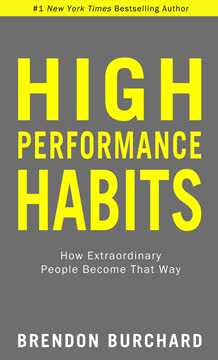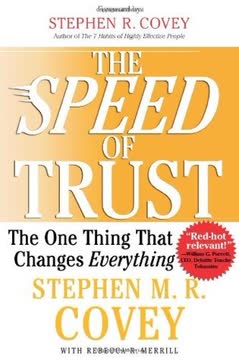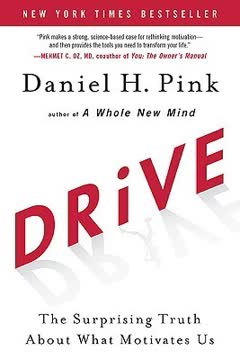Key Takeaways
1. Transformation Requires the Right Mindset and Skillset.
Successful people have the willingness to get laser-focused on what matters most and the discipline to apply the skillset to achieve it consistently.
Mindset and skillset. Achieving significant improvements in performance and productivity isn't just about wanting it; it requires both a mental shift and practical tools. The "Do What Matters Most" mindset is about moving from reactive living to proactive, intentional living, embracing discipline, and striving for continuous improvement ("good, better, best"). It means looking inward and taking responsibility for your own growth.
Enemies of progress. Several internal battles can hinder this mindset. Task saturation, feeling overwhelmed by too many demands, leads to misprioritization. Complacency, the "silent killer," makes you comfortable with the status quo and resistant to change. Cynicism acts as a filter that can block out helpful ideas, and procrastination, the "great enemy of success," prevents action by constantly deferring tasks.
Willingness and discipline. Overcoming these enemies requires willingness to stretch beyond your comfort zone and the discipline to consistently apply new habits. Like a rubber band, you must be stretched to grow. This combination of mindset and skillset empowers you to lead a life by design, not by default, significantly increasing your performance average across all areas.
2. Escape Task Saturation by Focusing on High-Influence (Q2) Activities.
The fastest way to simply, yet powerfully, get people focused on both high-performance and productivity is to help them develop the big three, putting them in the 1 percent of people who have developed this skillset.
Performance vs. Productivity. These terms are often confused but are distinct and crucial for success. Productivity is the rate of output per unit of input (e.g., number of calls made). Performance is the ability to do something efficiently and effectively (e.g., close ratio per call). High achievers excel at both, focusing their time on activities that yield the highest return.
The Do What Matters Most Matrix. This matrix, adapted from Eisenhower, categorizes activities into four quadrants:
- Q1 (DO IT!): Urgent and Important (Crises, deadlines). Reactive, high-stress. Minimize time here.
- Q2 (FOCUS): Important but Not Urgent (Planning, relationships, health, prevention). Proactive, low-stress, high-impact. Spend most time here.
- Q3 (MANAGE): Urgent but Not Important (Interruptions, some emails/meetings). Requires action but low value. Manage efficiently or delegate.
- Q4 (ELIMINATE): Not Urgent and Not Important (Time wasters). Eliminate entirely.
Shift to Q2. Most people spend too much time in Q1 and Q3, leading to task saturation, stress, and low productivity. The goal is to shift your focus to Q2 activities. This is where significant growth, well-being, and high performance occur. The "big three" habits provide the framework to identify and prioritize these crucial Q2 activities.
3. Lead Your Life with a Powerful Personal Vision.
your personal vision does not have to change the world; it just has to change your world!
The seed of legacy. A personal vision is the starting point for a purpose-driven life. It's the seed of your legacy, providing direction, motivation, and clarity. While historical figures like the Wright brothers had visions that changed the world, your vision's power comes from its meaning to you. It's about creating the mental reality of your best self before it becomes a physical reality.
Develop your vision. Creating a compelling vision requires introspection and imagination. Start by answering four key questions:
- What do you want to do/accomplish in 10-20 years?
- What traits do you admire in mentors/inspirations?
- What would you improve in your job, home, or community?
- How do you want others to describe you in 50 years?
These questions help uncover what truly matters.
Vision by role. Look at your life through key roles (personal, spouse, parent, professional, etc.). For each role, articulate what the absolute best version of you looks like. Use empowering language ("I am," "I will"). Your vision is the emotional destination, guiding your behavior and decisions, providing an internal compass that tells you when you're in or out of alignment.
4. Manage Your Year with Focused Roles and SMART Goals.
people are around 90 percent more likely to accomplish something if they have a well-written goal and plan.
Goals make vision real. While vision is the destination, goals are the specific, measurable milestones that pave the path. Setting goals correctly is crucial for turning intentions into reality and shifting focus from fears to targets. Research shows a dramatic increase in accomplishment likelihood with well-written goals.
Roles provide balance. Setting goals within the context of your key life roles (5-7 is optimal) ensures a balance of success stories. Your "Personal" role (physical, mental, emotional, spiritual) is paramount – taking care of yourself first allows you to show up better in other roles. This holistic approach prevents neglecting important areas while pursuing professional success.
Set SMART goals. Effective goals are Specific, Measurable, Achievable, Relevant, and Time-specific. Avoid vague words like "more" or "better." Aim for goals you can objectively say "yes" or "no" to at year-end. Stretch yourself (slightly uncomfortable) but keep goals achievable to maintain motivation. Share your goals with 3-5 trusted people for accountability and reference them often, ideally weekly.
5. Prioritize Your Time Weekly with Pre-Week Planning.
If you met us on the street one day and asked, “What’s one habit that would change my life—guaranteed?” our answer, 100 percent of the time, would be pre-week planning.
The power of planning. Just as pilots do pre-flight planning to avoid chaos, pre-week planning is essential for taking control of your week. It's the habit that translates your vision and goals into tangible weekly actions. It moves you from reacting to the "fire of the day" (Q1) to proactively scheduling your priorities (Q2).
Dramatic impact. Research shows consistent pre-week planning dramatically increases productivity. People who plan weekly accomplish significantly more tasks and activities (often doubling within a month) compared to those who don't. This isn't just about work; it includes personal priorities like exercise, relationships, and self-care, leading to a higher overall "performance average."
Reduced stress. By identifying priorities and scheduling them, you reduce task saturation and stress. When unexpected Q1 issues arise, you can calmly assess their importance relative to your planned Q2 activities and adjust your schedule rather than letting important things fall through the cracks. Pre-week planning provides clarity, focus, and peace of mind.
6. Pre-Week Planning is the Keystone Habit for Daily Execution.
Pre-week planning is the keystone (the most important stone in an arch); pre-week planning is what drives the vision and goals to become a reality.
Connecting vision to action. Pre-week planning is the critical link that connects your long-term vision and annual goals to your daily and weekly activities. It's the process where the rubber meets the road, ensuring that your time and energy are aligned with what matters most in each of your key roles.
The 4-step process. This simple, yet powerful, process takes 20-45 minutes weekly:
- Review: Look at your vision, roles, goals, and long-range calendar.
- Identify Roles: Write down your 5-7 key roles for the week (including Personal).
- Set Action Items: Brainstorm specific, important tasks/activities for each role this week (Q2 focus).
- Schedule: Assign a specific day and time in your calendar for each action item.
Writing these steps down is crucial for engaging your brain effectively.
Flexibility is key. While scheduling is important, aim to accomplish 70-80% of planned items. Leave some open space for unexpected Q1 tasks. If something doesn't get done, roll it to the next week. The goal is consistent progress and flexibility, not rigid perfection. Sharing your planned week with a partner or team can also align expectations and reduce frustration.
7. Consistent Habits Define Your Legacy and Make Each Day Count.
Your life, and your impact on the world, is the sum of your habits!
Time is the equalizer. Time is our most precious, non-renewable resource. How we choose to spend it, day by day, forms our habits, and these habits ultimately define our legacy. The story of the father buying an hour of his son's time highlights the irreplaceable value of prioritizing moments and relationships now.
Habits build momentum. The big three habits—vision, roles/goals, and pre-week planning—are high-performance habits that create positive momentum. They help you consistently focus on key areas like health, relationships, finances, purpose, enjoyment, and job performance. Improving these areas starts with identifying what matters (vision/goals) and then consistently taking action (pre-week planning).
Sustain the momentum. Developing these habits requires discipline and commitment. To sustain them:
- Commit to pre-week planning weekly for a year.
- Use tools like a planner or digital calendar.
- Seek accountability partners or coaching.
- Continuously refine your process.
- Incorporate productivity tips (morning routine, sleep/exercise/diet, chairflying, workstation setup, learning to say no).
The wind of life is always blowing; the big three help you set your sails to catch it and steer your life toward what matters most, making each day count.
Last updated:
Review Summary
Do What Matters Most receives mixed reviews, with an average rating of 3.77 out of 5. Some readers find the book's principles on vision-setting, goal-setting, and pre-week planning valuable, praising its practical advice for improving productivity and time management. However, critics argue that the content is repetitive, overly promotional, and lacks originality. While some appreciate the straightforward approach to prioritization, others feel the book could be more concise. Positive reviews highlight the book's potential to enhance personal and professional life, while negative reviews cite excessive testimonials and familiar concepts.
Similar Books









Download PDF
Download EPUB
.epub digital book format is ideal for reading ebooks on phones, tablets, and e-readers.




